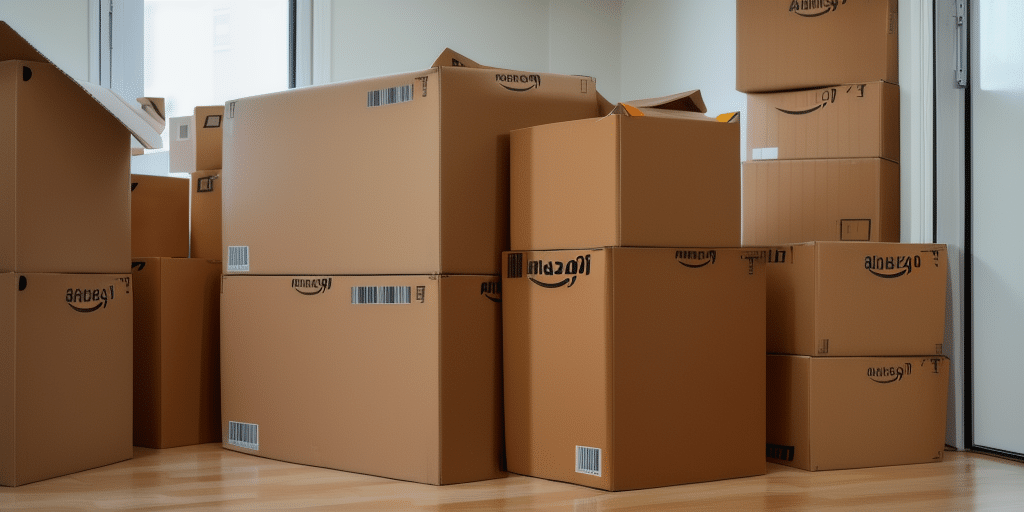What Is Amazon FBA?
If you're interested in selling products online, you've likely heard of Amazon FBA (Fulfillment by Amazon). But what does it mean, and how can it benefit your business? In this article, we'll dive deep into the world of Amazon FBA to answer these questions and more.
How Amazon FBA Works
Amazon FBA is a service provided by Amazon that allows sellers to store, package, and ship their products to customers. Here's how it works:
- Storage: Sellers send their products to Amazon warehouses, where they are stored until they are sold.
- Fulfillment: When a product is purchased, Amazon handles the packaging and shipping to the customer.
- Customer Service: Amazon manages customer service, including returns and refunds, on behalf of the seller.
By utilizing this service, sellers can save time and money on fulfillment while also taking advantage of Amazon's trusted brand name and extensive customer base.
The Benefits of Using Amazon FBA
Using Amazon FBA can offer a variety of benefits for sellers. Here are some of the most notable:
- Reduced Fulfillment Workload: With Amazon handling fulfillment, sellers can focus on other aspects of their business like marketing, product development, and customer service.
- Increased Customer Trust: Customers trust Amazon's brand and fulfillment process, which can lead to more sales and higher customer satisfaction.
- Expanded Reach: Sellers can take advantage of Amazon's global marketplace and easily offer their products to customers around the world.
- Lower Shipping Costs: Amazon can negotiate lower shipping rates for sellers due to their high volume of shipments.
- Access to Amazon Prime: Products fulfilled by Amazon are eligible for Amazon Prime, increasing visibility and attractiveness to Prime members.
In addition to these benefits, Amazon FBA also provides sellers with access to Amazon's customer service team. This team can handle customer inquiries, returns, and refunds on behalf of the seller, which can save time and resources. Additionally, Amazon FBA offers a multi-channel fulfillment option, allowing sellers to fulfill orders from other sales channels using Amazon's fulfillment network. This can streamline the fulfillment process and improve overall efficiency for sellers.
Setting Up and Managing Your Amazon FBA Account
If you're interested in using Amazon FBA for your business, the first step is to set up an account. Here's what you'll need to do:
- Create an Amazon seller account or upgrade your existing account to include FBA.
- List your products on Amazon's marketplace and indicate that you will be using FBA for fulfillment.
- Send your products to Amazon's warehouse and wait for them to be processed and added to your inventory.
- Start selling! Amazon will handle fulfillment and customer service on your behalf.
Once your products are in Amazon's warehouse, you can track your inventory levels and sales through your seller account. Amazon will also handle any returns or refunds on your behalf, making the process seamless for both you and your customers.
It's important to note that Amazon charges fees for using FBA, including storage fees and fulfillment fees. However, many sellers find that the benefits of using FBA, such as access to Amazon's Prime shipping program and increased visibility on the marketplace, outweigh the costs. For detailed information on fees, visit Amazon FBA Fees.
Understanding Amazon FBA Fees and Costs
Amazon FBA fees can vary based on factors like product size, weight, and volume. Here are some of the fees you can expect to pay:
- Storage Fees: Charged monthly for the space your products occupy in Amazon's warehouse.
- Pick and Pack Fees: Charged per unit for the cost of packaging your products for shipping.
- Weight Handling Fees: Charged based on the weight of your products.
- Shipping Rates: Negotiated by Amazon on your behalf for the cost of shipping your products to customers.
It's important to note that Amazon FBA fees can also vary by country and region. For example, fees in the United States may differ from fees in Europe or Asia. Additionally, certain categories of products may have higher fees due to their size or weight. Carefully consider these fees when deciding whether to use Amazon FBA for your business.
For a comprehensive breakdown of FBA fees, refer to Amazon's official FBA Fee Structure.
Optimizing Your Amazon FBA Strategy
Product Selection
Choose products that are small, lightweight, and have a high profit margin to maximize your returns. Products with steady demand and low competition are ideal for leveraging Amazon FBA effectively.
Listing Optimization
Optimize your product listings for Amazon's search algorithm and customer preferences. This includes using relevant keywords, high-quality images, and detailed product descriptions.
Inventory Management
Monitor your inventory levels to ensure you don't run out of stock. Utilize Amazon's inventory management tools to track sales trends and adjust stock accordingly.
Advertising and Promotions
Utilize Amazon's advertising options, such as Sponsored Products and Sponsored Brands, to increase visibility and drive sales. Running promotions and leveraging Amazon's deals can also boost your product rankings.
Another important aspect of optimizing your Amazon FBA strategy is to focus on customer satisfaction. This means providing excellent customer service, responding promptly to customer inquiries and complaints, and ensuring that your products are of high quality.
Stay up-to-date with the latest trends and changes in the Amazon marketplace. This includes keeping an eye on your competitors, staying informed about changes to Amazon's policies and fees, and adapting your strategy accordingly.
Common Mistakes to Avoid When Using Amazon FBA
Here are some common mistakes to avoid when using Amazon FBA:
- Failing to Monitor Inventory Levels: Running out of stock can lead to lost sales and negatively impact your product rankings.
- Not Optimizing Listings: Poorly optimized listings can result in lower visibility and fewer sales.
- Choosing Inappropriate Products: Selecting products that are too large or heavy can result in high fees and lower profits.
- Poor Account Management: Not responding to customer inquiries or negative feedback, not keeping track of your financials, and not staying up to date with Amazon's policies can harm your business.
It's important to regularly check your account metrics and make necessary adjustments to ensure your business is running smoothly and efficiently.
Amazon FBA for International Shipping
If you want to expand your business globally, Amazon FBA can help. Here's how to use FBA for international shipping:
- Ensure your products can be shipped internationally and comply with all relevant regulations.
- Enable international shipping on your Amazon seller account.
- Send your products to Amazon's designated international warehouses.
- Wait for Amazon to handle fulfillment and customer service on your behalf.
Using Amazon FBA for international shipping may come with additional fees and taxes. Research and understand the costs associated with international shipping before sending your products to Amazon's warehouses. Additionally, consider offering international customers competitive pricing and shipping options to increase your chances of success in the global market.
The Future of Amazon FBA: What to Expect
Amazon FBA has already revolutionized the world of e-commerce, but there is still plenty of room for growth and innovation. Some trends to watch for in the future include:
- Continued expansion into new markets and regions.
- Advancements in automation and robotics to further streamline fulfillment processes.
- Increased focus on sustainability and green practices.
Another trend to watch for in the future is the integration of augmented reality (AR) technology into the Amazon FBA shopping experience. This technology will allow customers to virtually try on clothing and accessories, visualize furniture in their homes, and even see how products will look in different lighting conditions. This will not only enhance the customer experience but also reduce the number of returns due to inaccurate product descriptions or sizing.
Success Stories of Businesses Using Amazon FBA
There are countless success stories of businesses that have used Amazon FBA to grow and thrive. Here are just a few:
- Natalie Andersen, founder of the clothing brand Free to Move, grew her business from $0 to $500,000 in annual revenue in just two years using Amazon FBA.
- Brad DeGraw, founder of the pet supplement company Animal Essentials, saw a 300% increase in sales after using Amazon FBA.
- Chris Guillebeau, author and entrepreneur, used Amazon FBA to sell over 1 million copies of his book The $100 Startup.
Comparison of Amazon FBA with Other E-commerce Fulfillment Options
Amazon FBA is just one of many e-commerce fulfillment options available to sellers. Here's a comparison of FBA with some other popular options:
| Amazon FBA | Fulfillment by Merchant | Dropshipping | |
|---|---|---|---|
| Shipping Fees | Negotiated by Amazon | Set by seller | Set by supplier |
| Storage Fees | Charged by Amazon | N/A | N/A |
| Pick and Pack Fees | Charged by Amazon | N/A | N/A |
| Customer Service | Handled by Amazon | Handled by seller | Handled by supplier |
In conclusion, Amazon FBA offers sellers a powerful tool for streamlining their e-commerce businesses and expanding their customer base. By understanding how FBA works, the associated fees, and best practices for success, sellers can take full advantage of this valuable service and grow their businesses to new heights.






















